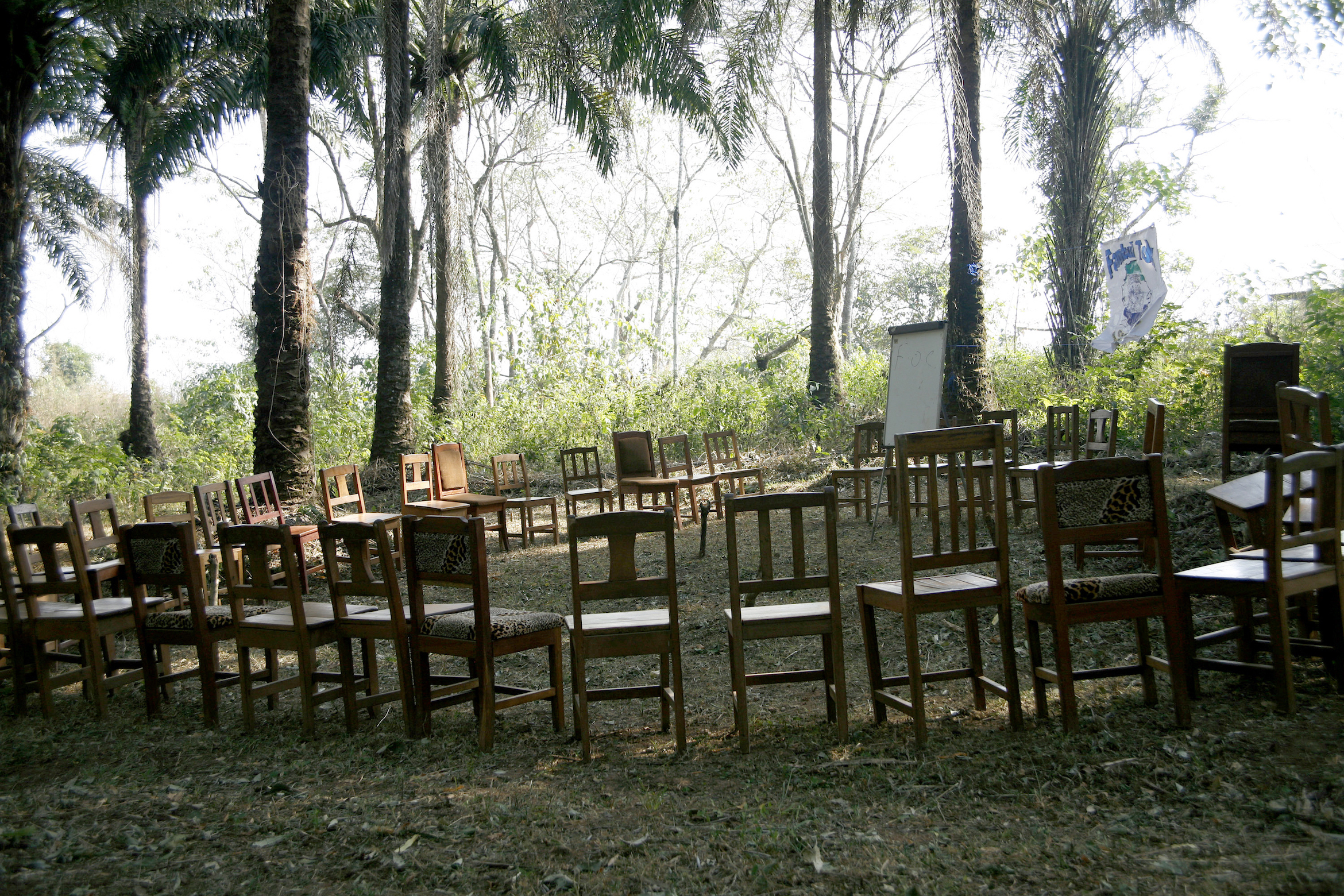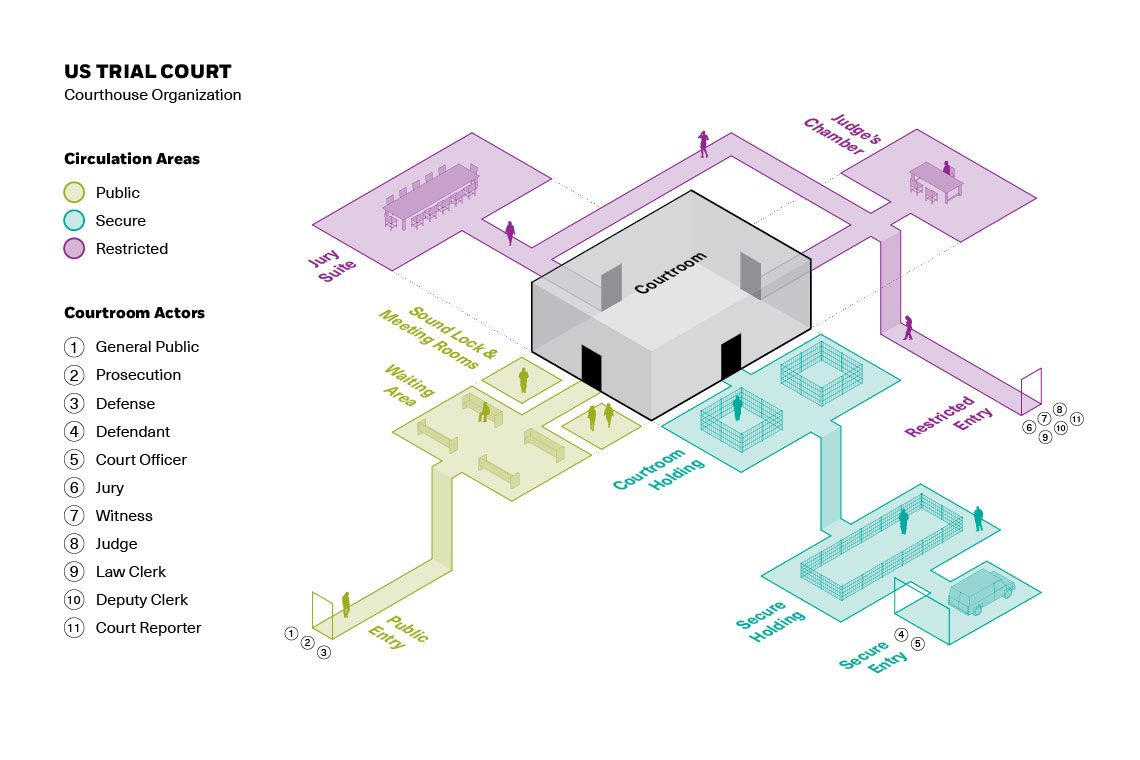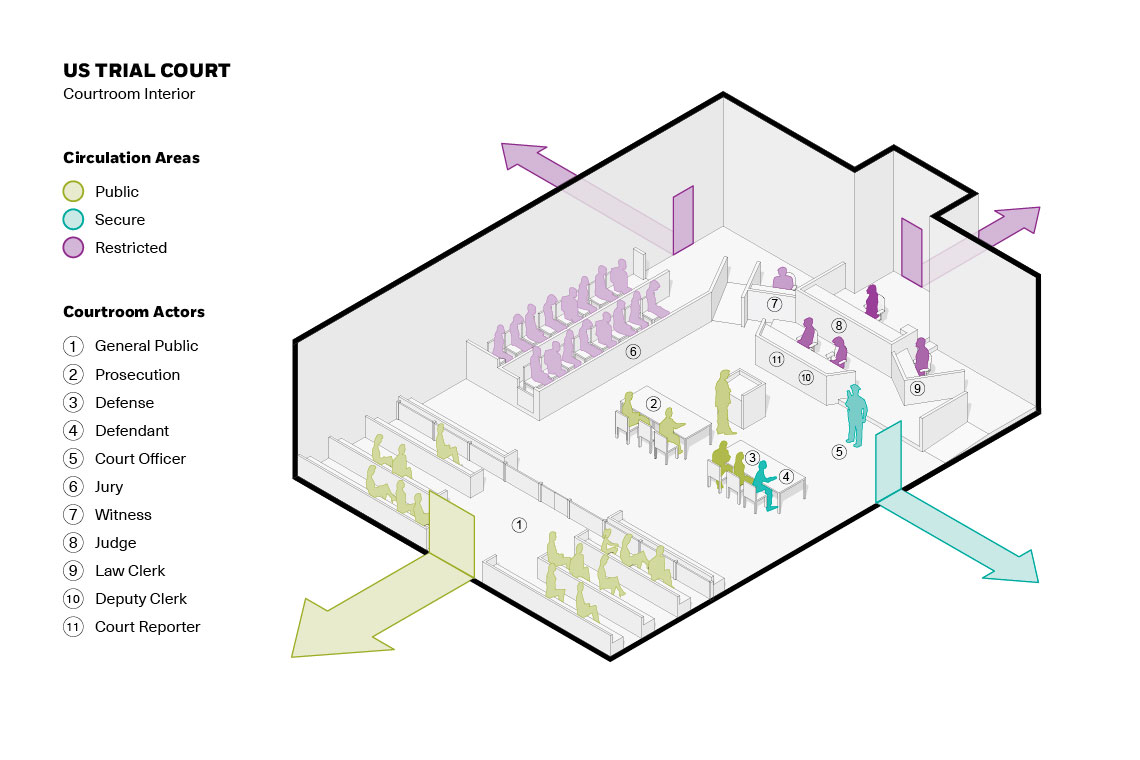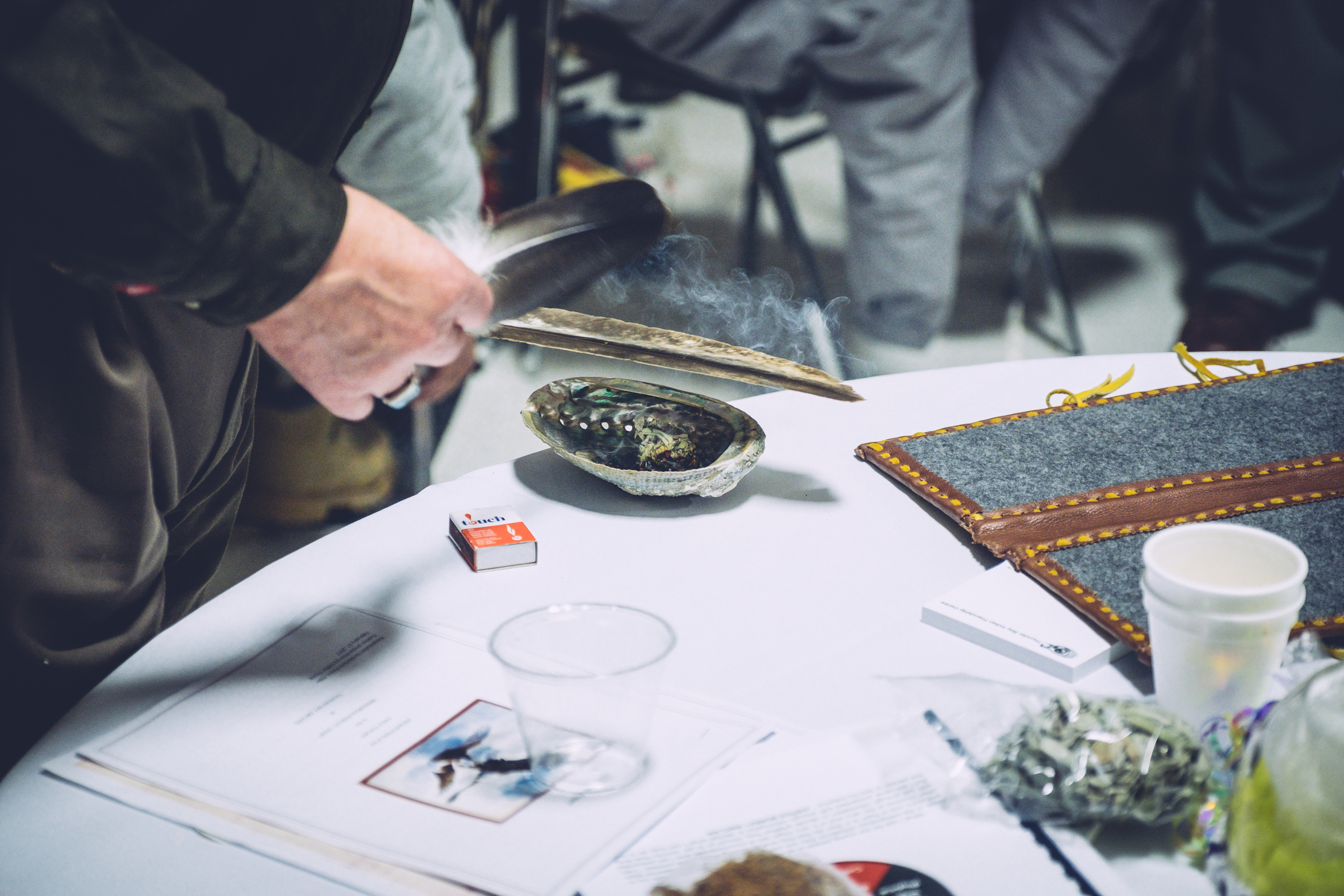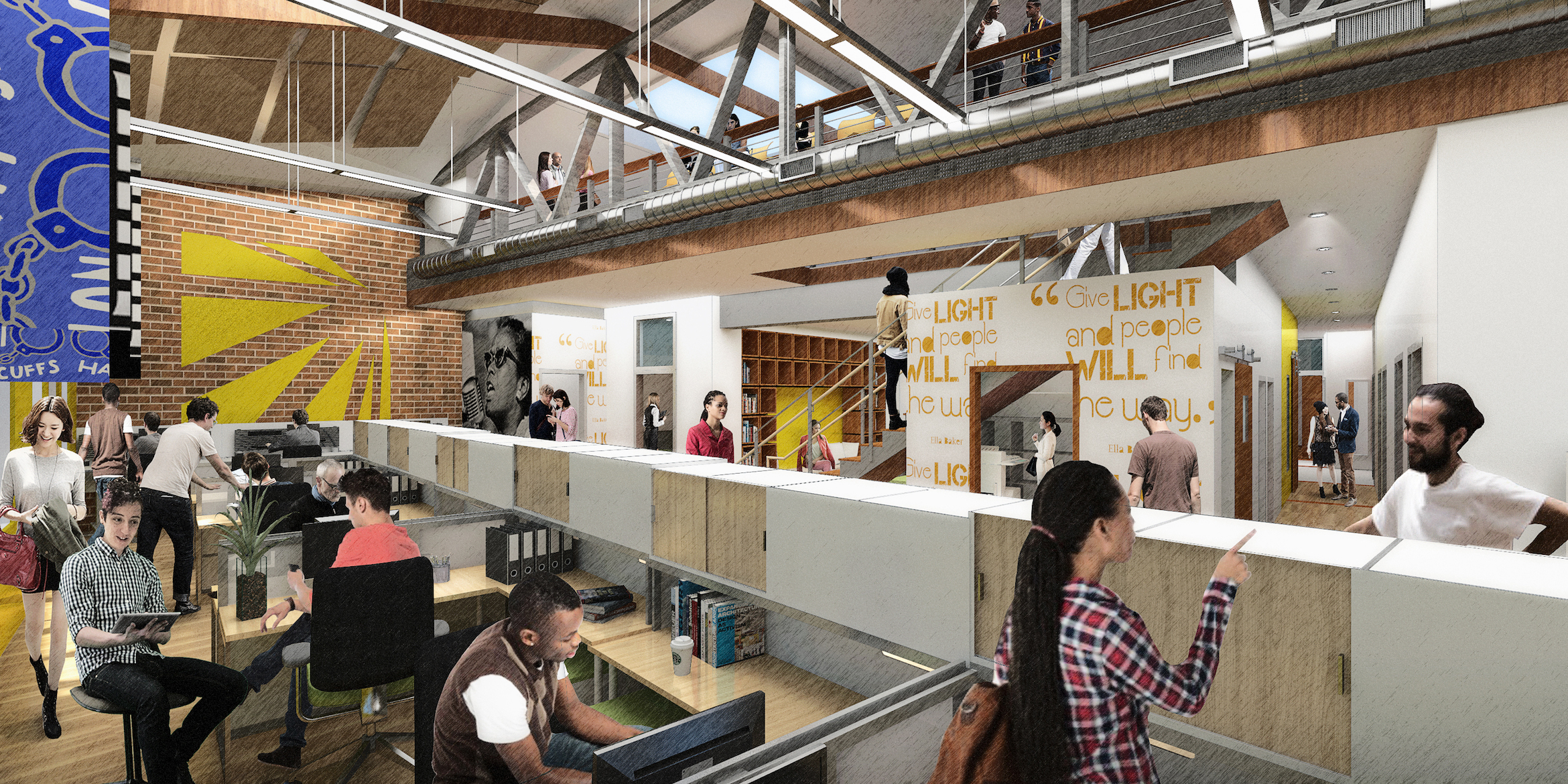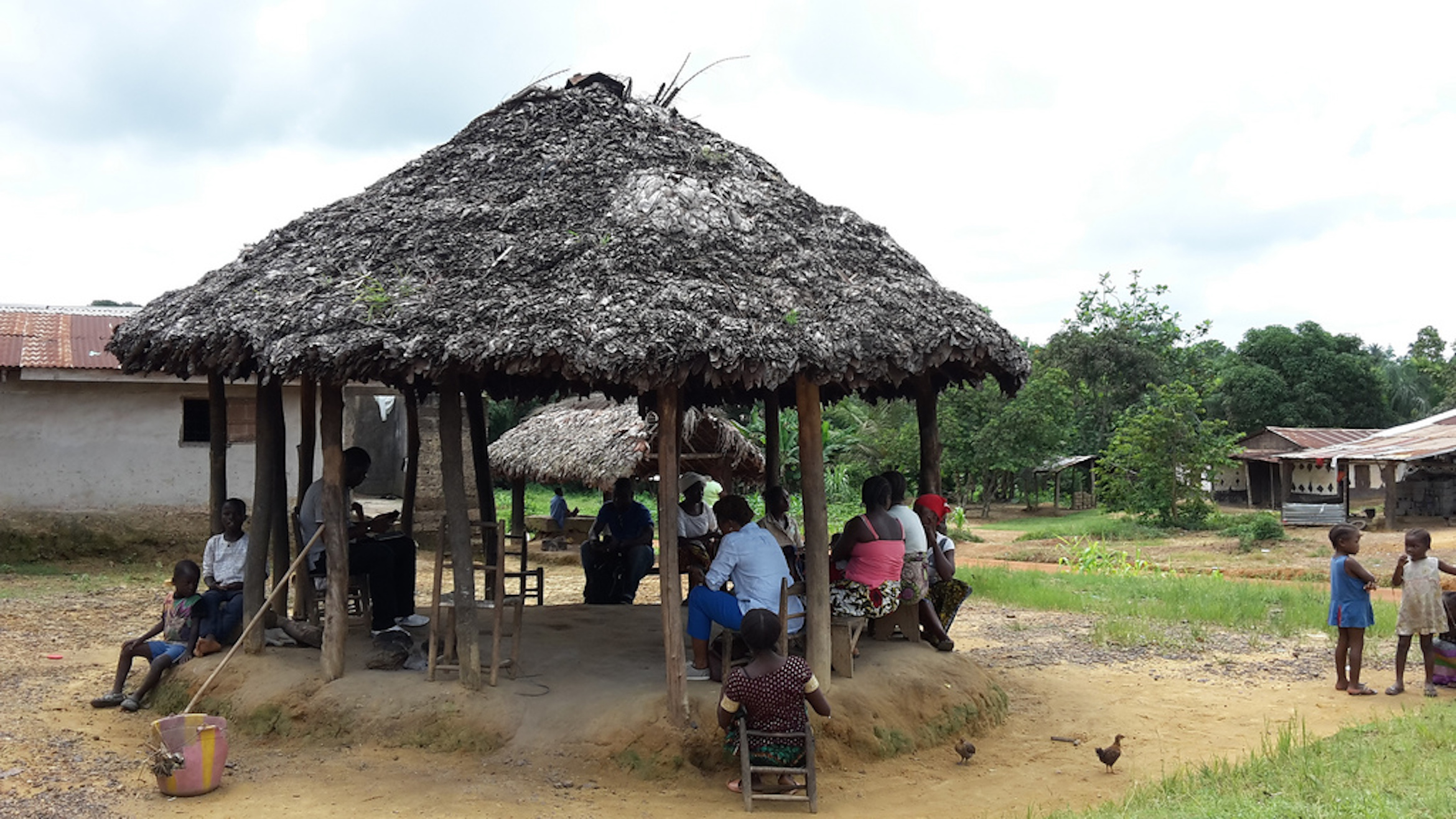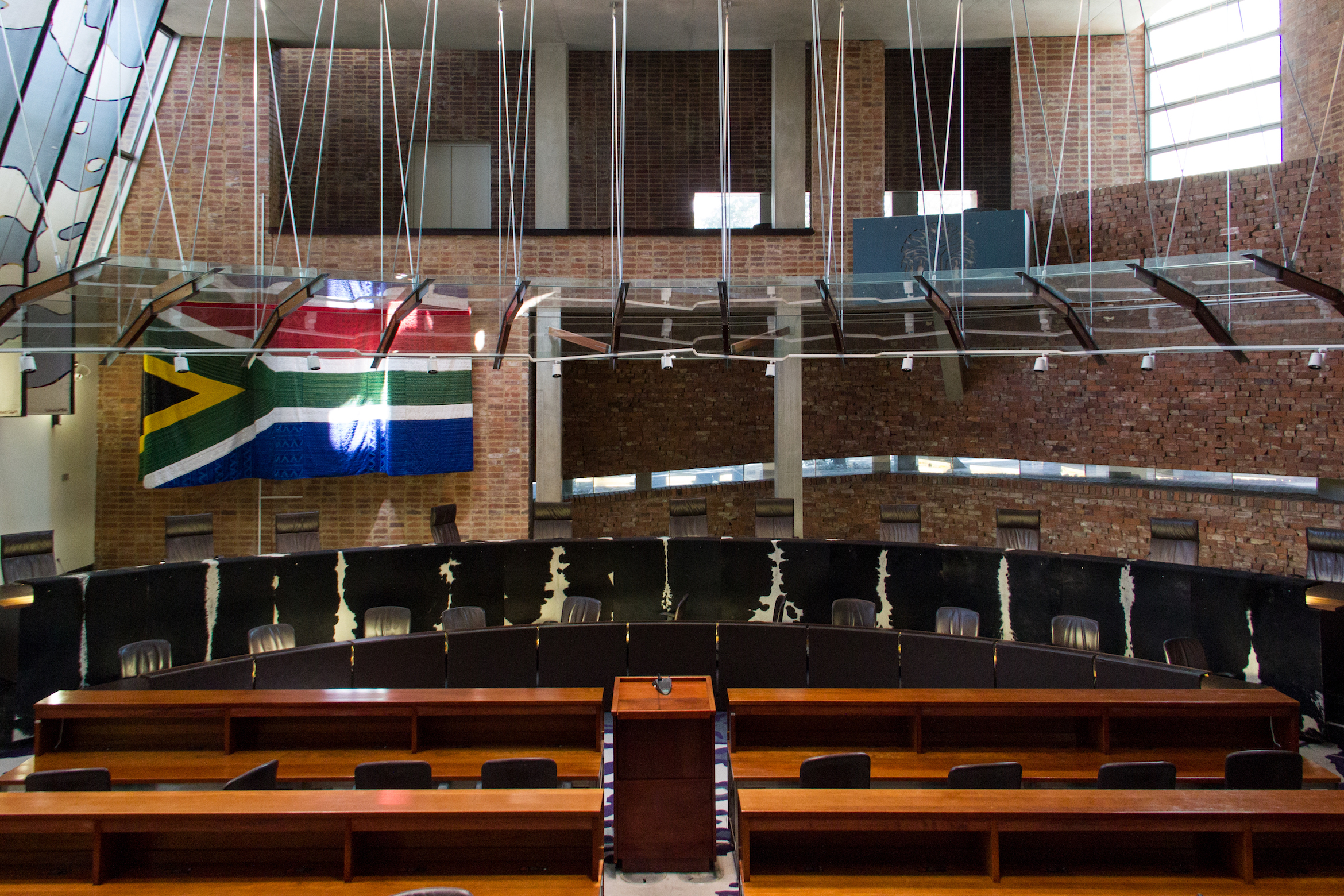The Location of Justice
An examination of the pervasive and often overlooked infrastructure of criminal justice in New York and the spaces that could serve a more just city.
In This SeriesWe are celebrating 15 years — and counting — of stories that are deeply researched and deeply felt, that build a historical record of what the city has been.
The courtroom of the future may bear little resemblance to what we know from jury duty or TV. Many new spaces designed for the administration of justice have moved far away from the familiar paradigm of rigid hierarchy, which often fails to guarantee a fair process or outcome. As reformers and advocates embrace views of justice as problem-solving or collective peacemaking, they are building spaces where breaking bread and mutual respect replace plea bargains and punishment. Anna Altman explores the tenets of procedural justice and restorative justice and new environments designed for their unfolding. In projects as varied as a model community court in Red Hook, Brooklyn, a purpose-built space for peacemaking in Syracuse, and a community center and restaurant under construction in Oakland, a fair process with respect for all participants is the first priority.
American justice is intertwined with the drama of the courtroom. The tense moment before a defendant receives his sentence; the shock of an alibi falling apart under cross examination; a galvanizing closing statement from a prosecutor: these account for some of the most gripping scenes in United States culture, from literature to TV. The stage for this drama of confrontation is the courtroom, designed for the symbolic imposition of order. There may be dark wood paneling or heavy furnishings, durable as well as immovable — security is considered down to the level of the furniture. An elevated dais for the judge, prisoners’ docks near the sheriff, jurors on elevated benches enclosed by a bar or balustrade, and a witness stand to one side.
The gravity of the justice system, its arbitration of crime and punishment, is projected by the solemn and impregnable space where it occurs. The objects, procedures, and customs of the court all serve to remind us that we are at the mercy of the law. The dominant mode of interaction between litigant and judge is not one between equal citizens but one of submission, of being subject to the state’s judgment. The courtroom spaces, and the diminution of the accused in particular, reinforce the principle that a person with good sense would do all they can to avoid such an experience — namely, abide the law.
There are all sorts of reasons to believe this system and its hierarchies don’t achieve justice: long waits for trials, harsh sentences for minor infractions, the high percentage of incarcerated individuals in the United States, poor living conditions in prison, high rates of recidivism, the vast overrepresentation of certain racial groups in the prison population, and the failure to rehabilitate offenders, to name just a few. What’s more, the courtroom’s staged drama is increasingly irrelevant for the real workings of the criminal justice system, as each year upwards of 90 percent of criminal cases nationwide resolve in plea bargains. As activists and reformers seek to rethink and revise how our justice system operates, they include the style and procedure of the court as an element that no longer serves its purpose.
Reformers and analysts have asked: What would happen if performing rigorous hierarchy and threatening punishment weren’t the ruling principle of our justice system? Rather than remove defendants from their communities, what if judges proposed solutions to problems, such as counseling, addiction treatment, or job training? What if a judge worked with others from the community — social workers, housing experts — to connect defendants with the services they need to thrive? Some of this is already happening, but there is still a question of where — in what kind of building or room — it would take place. What if justice was performed in a space that not only afforded respect and agency to everybody involved, from the judge on down to defendants, but treated each person as an equal member of the community?
Lawyers, social workers, psychologists, urban planners, and even judges now advocate a radical rethinking of the way justice is administered in the US. They propose alternative models for everything from the treatment of defendants to the kinds of social services community members should be able to obtain at a courthouse. And they are exploring the role of architects and designers in transforming the hierarchy that prioritizes security over comfort, privacy, or access to services, and that pursues punishment rather than restitution, forgiveness, and problem-solving.
One concept of crime and punishment in the U.S. criminal justice system rests primarily on the idea that people obey the law because it is in their self-interest to do so — they wish to avoid punishment. The higher the penalty for a crime, the idea goes, the more the penalty should deter citizens from committing it. Tom Tyler, a psychology professor at Yale Law School, thinks otherwise. For thirty years, Tyler has studied how individuals perceive their interactions with the criminal justice system, and his work shows that people are more likely to abide by a court’s rulings if they think the process used to reach those rulings is fair, even if the ruling isn’t in their favor. The key, he says, is fostering a sense of legitimacy and instilling trust in the process, both of which depend on the perception of fairness. Tyler argues that fairness and transparency about how legal decisions are made are paramount, and ought to apply all along the justice timeline, from policing methods and arrest to trial proceedings and imprisonment. This concept is known as “procedural justice.”
“If a litigant feels that they have been treated with respect, and that they understand the legal process and feel they have a voice that will be heard by an independent arbiter, they are more likely to feel the process is fair, more likely to comply with their obligations, and less likely to reoffend,” says Adam Mansky, director of operations for the Center for Court Innovation (CCI). The New York-based organization has worked on judicial reform according to the principles of procedural justice in dozens of cities across North America, and provides expert assistance to court systems around the world. One focus of CCI’s work is on the buildings where justice is served, both through updates to older courthouses, and construction of new justice spaces from the ground up. Its most innovative model is what’s known as a community court.
The cheerful, yellow brick façade of the Red Hook Community Justice Center (RHCJC) in Brooklyn features two arched entryways, marked “boys” and “girls” for the school children who once passed under them. The former parochial school was renovated in the late 1990s as part of a partnership between CCI, the city of New York, and the Red Hook community to establish a community court. Amanda Berman, the RHCJC’s program director, told me that the center was created with the idea that it would serve “as a demonstration project, so that reformers in other jurisdictions … had a blueprint.” RHCJC’s homey frugality and repurposing of an unused building have enhanced its appeal to cash-strapped districts all over the world, and similar courts can now be found in Austin, San Francisco, Seattle, Detroit, and Vancouver.
There’s no marble, stone, or heavy paneling inside the Community Justice Center. Instead, there’s blond wood and green-painted accents. The courtrooms and public spaces, which receive more traffic, got the better finishes, so the upstairs offices are by needs more spartan. To compensate, the corridors were spruced up with colorful linoleum and mossy green and cranberry red walls. On a recent Friday morning, sunlight flooded the lobby, a double-height space crowned with stainless steel sconces and recess lighting. A pair of security guards teased a visitor who wasn’t sure where she was going. “Well, you take a right there and then take the stairs to the fifteenth floor,” one joked, pointing to a prominent red-and-white map indicating that the building had only two stories. From the entrance, two metal detectors in the lobby lead to a staircase and, from there, to the courtroom, but the guard waved the visitor around to save her the trouble.
In the ‘90s, the justice system in Red Hook was failing: local crime and drug use were out of control, and residents felt caught between violence and street-level drug trafficking on the one hand, and an unfair or impassive justice system on the other. With CCI’s guidance, the local community board, members of the Tenants’ Association of the Red Hook Houses, and a new Public Safety Corps, as well as the Brooklyn District Attorney’s office, arranged to divert non-violent criminal cases that took place in three of the neighborhood’s precincts from Brooklyn’s borough court to a local community court. Red Hook residents like to say that the neighborhood is divided between the “the Front,” or “The Houses,” a dense complex of public housing, and the “the Back,” or “the Point,” a more gentrified commercial strip closer to the harbor. The Red Hook Community Justice Center sits right in the middle.
The center’s goal was to reflect a changing conceptual framework that saw violence as the consequence of root conditions like poverty, addiction, and homelessness, rather than a result of individual choices and infractions. In addition to the services required for court procedures — a courtroom, judge’s chambers, district attorney and public defender offices, holding cells — CCI and the active members of the Red Hook community insisted on allocating space for social services and educational programming. Today, the RHCJC contains a criminal court, social workers’ offices, a housing court and a housing resource center that advises public housing tenants on damage or disputes, classrooms, flexible meeting and conference rooms that are used for everything from private therapy to group discussions on topics like anger management, and a multi-purpose room that hosts a youth court and mediation groups. People can walk in and get set up with a drug treatment plan or mental health services. They can sign up for a GED class, run by the Board of Education. Teens can learn about digital photography, or join a peacemaking group. In sum, RHCJC is much more of a community center than it is a courthouse.
That attitude is reflected in the courtroom, too. Judge Alex Calabrese still sits at the front of the room, but he presides from behind a modest wood desk only slightly elevated off the floor. Blond wood benches seat everyone else. Natural light floods the space. Calabrese’s chambers include a private entrance into the courtroom, but he likes to walk through the same hallways and stairways as anyone else in the building, to shake the hands of defendants and speak to them directly. “I can say good morning to them,” he says. Whereas other New York City courthouses may have court officers primed to keep the peace, here, the officers see themselves as public resources. One officer on the second floor sits at a desk with a sign that reads, “Questions? Our court officers are happy to help.” Calabrese believes the close quarters of the building helps to break down barriers. “I’m in the community physically,” he says. “The architecture works hand in hand with our approach.”
Alta Indelman, the lead architect for the RHCJC, has collaborated with CCI since the team renovated its first community court, in midtown Manhattan, in 1993. Indelman doesn’t see herself as a justice reform architect, emphasizing that her approach is the same as when she renovates a private residence. “It’s not justice-facility design,” she says, “it’s thoughtful design.” In Red Hook, her mandate was to design a space that would “be treated with respect, and the space should treat you with respect,” she says. “We didn’t want something frivolous. We didn’t want something that connoted anything but a serious and fair space. But we wanted it to look like a place that someone from the community could feel comfortable in, and that he or she belonged there.”
The building’s renovation, completed with a modest budget of $5 million, makes clever use of its existing assets, such as generous arched windows that flood the courtroom, community spaces, and offices with sunlight, and connect the interior of the building to the outside world. “You’re not in this tomb when you walk in,” says Indelman. Even the holding cells, in the basement, have natural light streaming in through half-size windows just below the ceiling, and the cells are fronted with security glass rather than bars. Nevertheless, these are still holding cells and court officers present are armed. The trappings of a regular court remain in place, however moderated.
All the same, the staff of the RHCJC seek a higher standard. “We want people to come here voluntarily,” says Amanda Berman, the Center’s program director, referring to the community services available. “If you start from that premise, you have to create an environment where people feel comfortable, welcomed, and can navigate the space.” There’s a staffed information window on the first floor and loads of resource boards. Proper signage is printed professionally on plastic poster boards in Spanish and English, with consistent colors and design to help with wayfinding. In the intake room, where potential clients wait to be evaluated by social workers, there are water and snacks, and a TV that plays movies. Even the holding cells have signs to orient detainees, posing and answering simple but essential questions, such as: “Where am I?”; “Why am I waiting?”; and “When will I get food?” Berman says that this kind of basic consideration goes a long way in making people feel like they are treated with respect. “There’s an air of transparency, optimism, and hope.”
Located on the shore of Lake Superior in northern Ontario, the Thunder Bay Consolidated Courthouse, which opened in 2014, takes the idea of a community court, integrates it with mainstream justice operations, and inflects it with the region’s historic culture. The six-story glass-and-stone building, designed by Toronto-based Adamson Associates, holds Ontario’s Superior Court, its Court of Justice, various social services, and the province’s first Aboriginal Settlement Conference Suite, specifically designed according to the justice traditions of the Indigenous community.
To create the Aboriginal Settlement Suite, the state justice system partnered with the Indigenous Friendship Centre, a forty-year-old charitable organization that serves the region’s Indigenous community. Aboriginal Canadians, contending with historic abuse and present poverty, make up only three percent of the population but account for one in four admissions to correctional services. In its own facilities, the Centre offers services like health and wellness support, including addiction recovery programs, and education and employment training; its justice program, known as the Indigenous People’s Court (IPC), makes its home in the Aboriginal Settlement Suite.
The Indigenous Court operates according to the principles of restorative justice, another judicial reform movement, which, rather than treat crime as an infraction against the state requiring punishment, aims to repair the harm that a crime does to the victim and the community. At the Indigenous Court, community figures including a judge, lawyers, tribe elders, the accused, the victim, and others with direct connections either to the accused or the victim (like family) participate in an open discussion about what has occurred and why. Together, these stakeholders consider questions like: “Who has been hurt?”; “What are their needs?”; and “Whose obligations are these?” The Indigenous practices aren’t new, nor are they traditional — ignored or suppressed for centuries, these methods are now being rediscovered by and adapted by mainstream justice systems. So far, the Indigenous Court has only processed about fifteen cases; once it reaches full capacity, it will hear around thirty cases a year.
Charlene Baglien, the executive director of the Thunder Bay Indigenous Friendship Centre, cited CCI as an inspiration for the Aboriginal Suite. Although they don’t use the term, the women who run the Indigenous Friendship Centre emphasize the principles of procedural justice, including orienting visitors and striving for egalitarian and comprehensible court procedures. The Indigenous Peoples’ Court uses many of the same strategies as Red Hook — natural light, warm colors — but takes it further, with upholstered furniture, carpet, and other softening touches. The circular room where the court convenes is airy and magnificent, inspired by the shape of the indigenous medicine wheel. “It almost looks like a teepee inside,” says Roseanna Hudson, the Friendship Centre’s coordinator of justice services. The rounded walls feature panels of blond wood that vary in size and depth; together, they create a stepped texture illuminated by recessed lighting above. The space is capped with a luminous white dome — skylights at the top allow in natural light — crisscrossed with painted intersecting lines. There are four entrances, to represent the cardinal directions, and these are designated so that victims and offenders can have some privacy before entering the room. A unique ventilation system allows for smudging, a space-purifying Indigenous practice involving an eagle feather and burned sage.
Court procedures emphasize equality and choice. Anyone who appears as a perpetrator before the court has to opt into its process and accept responsibility for the crime. (In other words, instead of going through a standard trial, the perpetrator effectively pleads guilty.) Participants sit together in a circle, facing one another at the same height. Everyone is invited, rather than forced, to appear. The judge will talk directly to the defendant, who speaks for him- or herself and in their Indigenous language if they wish. Following an open discussion, the elders and the judge adjourn to discuss the case before presenting the ruling. The idea, says Hudson, is to “treat [the accused] like human beings but at the same time provide guidance, support, and direction, to help them along the way.” The goal, above all, is to leave clients in the community. Baglien and Hudson believe that these interventions make their clients more likely to comply with their obligations, and less likely to reoffend. “Change isn’t going to happen overnight,” says Hudson, but they want everything about the program to give litigants a chance to succeed.
In 2014, sujatha baliga, the director of the Restorative Justice Project at Impact Justice, told the LA Times that courtrooms are passé: They’re “so binary — someone is going to be victor and someone is going to be vanquished.” The subject of the article was a design workshop at a local prison led by Deanna Van Buren, an architect and justice reform advocate, and co-founder of a non-profit called Designing Justice + Designing Spaces that helps community groups develop restorative justice spaces. She has designed spaces ranging from repurposed storage trailers for peacemaking circles to an entire complex for Restore Oakland, a joint project of the Ella Baker Center for Human Rights and the Restaurant Opportunities Centers United (ROC United), which broke ground in December. The building will include a community center with restorative justice programs and a restaurant with a job training program for the formerly incarcerated.
Van Buren is a vocal proponent of a new architectural paradigm for justice spaces, and strongly believes that restorative justice is a unique process that requires its own dedicated space. “Aligning it with or embedding it inside a criminal court or civil court or other adjudicatory process or building, that’s counter to the process,” she says. “I just think it’s putting a Band-Aid on a big wound. It’s still a courtroom.” In restorative justice spaces, “the values and sensitive nature of the proceedings are so different from our current judicial system that the judicatory building typologies are neither relevant nor appropriate,” says Van Buren.
In broad terms, Van Buren advocates shifts in design that can facilitate the transition from punitive justice to a restorative justice model. First, justice spaces should be sited locally, and in “neutral territory” (like the Red Hook Community Justice Center, she notes). A well-chosen location where diverse individuals from the community feel comfortable can breathe new life into an unused building or a derelict neighborhood. The building, too, can promote inclusivity and problem-solving by embracing smaller, differentiated spaces over the monolithic prototype associated with most justice spaces. Many of courthouses’ traditionally monumental qualities respond to a need for privacy and security; if we reject the punitive model of justice, Van Buren argues, there can be greater transparency, with spaces that are flexible and shared. Van Buren cautions, however, that specific design elements aren’t enough to transform or equalize interactions in an otherwise fraught or unequal place: “While new courthouse design has attempted to add large elements of glazing as a metaphor of openness and transparency of process, it does little to mitigate the opacity between the programs internally,” she says.
Van Buren and others say restorative justice spaces should feel comfortable and approachable, rather than imposing and authoritative. Peacemaking circles are used for decision making, problem solving, and conflict resolution in different communities, from schools and families to the work place and the criminal legal system. A fundamental tenet of these circles is that each person has a change to speak. The idea is to work through conflict in a safe, productive way that strengthens and builds relationships and addresses community problems. The Near Westside Peacemaking Center in Syracuse, which Van Buren helped design for CCI, recalls domestic space: light, views, texture, fabric. Van Buren recommends windows or transparent partitions (“you want a view to nature if possible”), soothing sounds (running water or white noise), decorations that are attractive and calming (pictures of nature; a fish tank). There may be objects in the room that people can touch and manipulate, like clay or stuffed bolsters. One surprise? “A space for restorative justice needs a community kitchen,” she says. “Breaking bread and food are really important to doing justice in this way.” Other, unanticipated needs can be met with a flexible space, like a small garden where participants can walk around, or a “support room” with a day bed so someone can rest or have a moment alone. The idea, she says, is that “you know that whatever you might have to face, the environment is supportive.”
Van Buren has found inspiration in peacemaking traditions among Indigenous communities. In native and traditional structures like Navajo hogans (traditional packed mud structures) and Liberian Palava (hexagonal or round huts with partial walls, open sides and a roof, often thatched), and in Fambul Tok — a restorative justice process in Sierra Leone that begins by designating a tree as a peacemaking space — Van Buren sees prototypes that offer strategies for present-day restorative justice. She cites South Africa’s Constitutional Court, constructed on the site of a former prison complex to symbolize the country’s transformation from racist authoritarianism to inclusive democracy, as one successful example. (Some of the jail’s original bricks were reused in the Constitutional Court.) The building, like Fambul Tok, is based on the concept of “justice under a tree”; natural light, views, and indigenous materials such as timber and black slate enliven the space throughout. To Van Buren, the project demonstrates how “we can create spaces for justice that are beautiful, uplifting, and tell a story.”
Van Buren also conducts trainings and workshops with community groups and prison inmates to transform their existing spaces. One workshop with inmates generated some small-scale, practical suggestions for how to design a livable prison: a skylight (to prevent vitamin D deficiencies), a fountain (a symbol of renewal), privacy barriers for showers and toilets, and a central room with windows and a peacemaking circle at the center. All these interventions gesture toward the way that inmates feel they’re treated, and how they wish they would be treated instead. CCI and Tom Tyler call this procedural justice, but prisoners’ basic suggestions for the spaces where they’re imprisoned demonstrate desire for the same things anyone might want out of any space they inhabit: elements that promote health, enable relaxation, and stimulate growth.
A space devoted to more progressive ideas of justice should not be conflated with justice itself, though; nor should thoughtful design of a justice space be conflated with the desire that justice be done. Progressive designs don’t guarantee justice any more than typical, punitive ones. Whether pursued in a traditional, highly-ordered courtroom, or a more flexible and accessible space, justice is not a set of fixed principles to be applied, but a set of relations to be mediated. What kind of person should a judicial space be built for? For someone with dignity.
This article was updated on February 1, 2018 to make the following corrections: sujatha baliga is director of the Restorative Justice Project at Impact Justice, not at the National Council on Crime and Delinquency; and Adamson Associates are the architects of the Thunder Bay Consolidated Courthouse.
Courtroom schematics reflect design guidelines drawn from the General Services Administration 2007 U.S. Courts Design Guide (the most recently published federal guide for court design).
The views expressed here are those of the authors only and do not reflect the position of The Architectural League of New York.
An examination of the pervasive and often overlooked infrastructure of criminal justice in New York and the spaces that could serve a more just city.
In This Series
